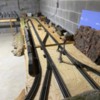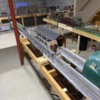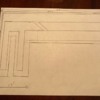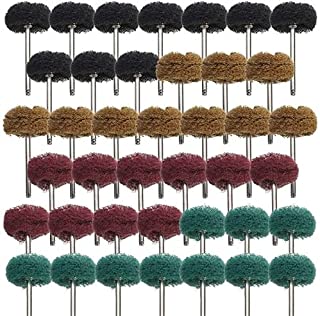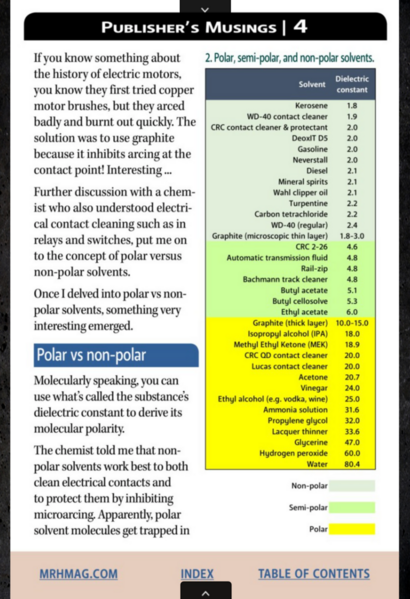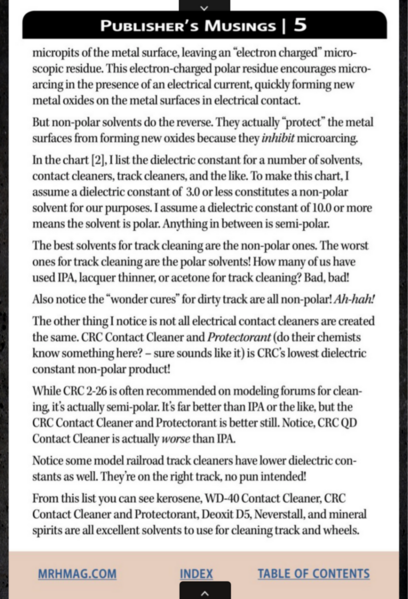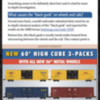Hi all, had a visit from my brother in law this week and we were exploring why I am having issues with losing power to the track. As it turns out, it may have less to do with the electrical connections to the track but more to do with how the train reacts on the track. Some general questions:
1. What should I use to clean the track? Is isopropyl alcohol ok?
2. Do I need to apply something to the track after cleaning it? He read somewhere about applying graphite to the track? If so, not sure what product to purchase nor how much to apply to the track.
3. I've always been pretty fastidious about cleaning the locomotive pickup rollers. My brother in law suggested that I also should clean the gunk off of the locomotive wheels. His thought was that the locomotive wheels must contact the ground rail in order to complete the circuit to make the locomotive run. Does that make sense?
4. Is it important, when I clean the track, to just clean the top part of the track - as that is where the electrical contact is made?
5. Finally, about how far apart should the feeder wires to the bus wires be? I currently have feeder wires every 10-12 feet. Is that ok?
I know, lots of questions. But I've been getting a bit frustrated as of late with the running of my trains and the constant stalling.
Thanks
Jeff







